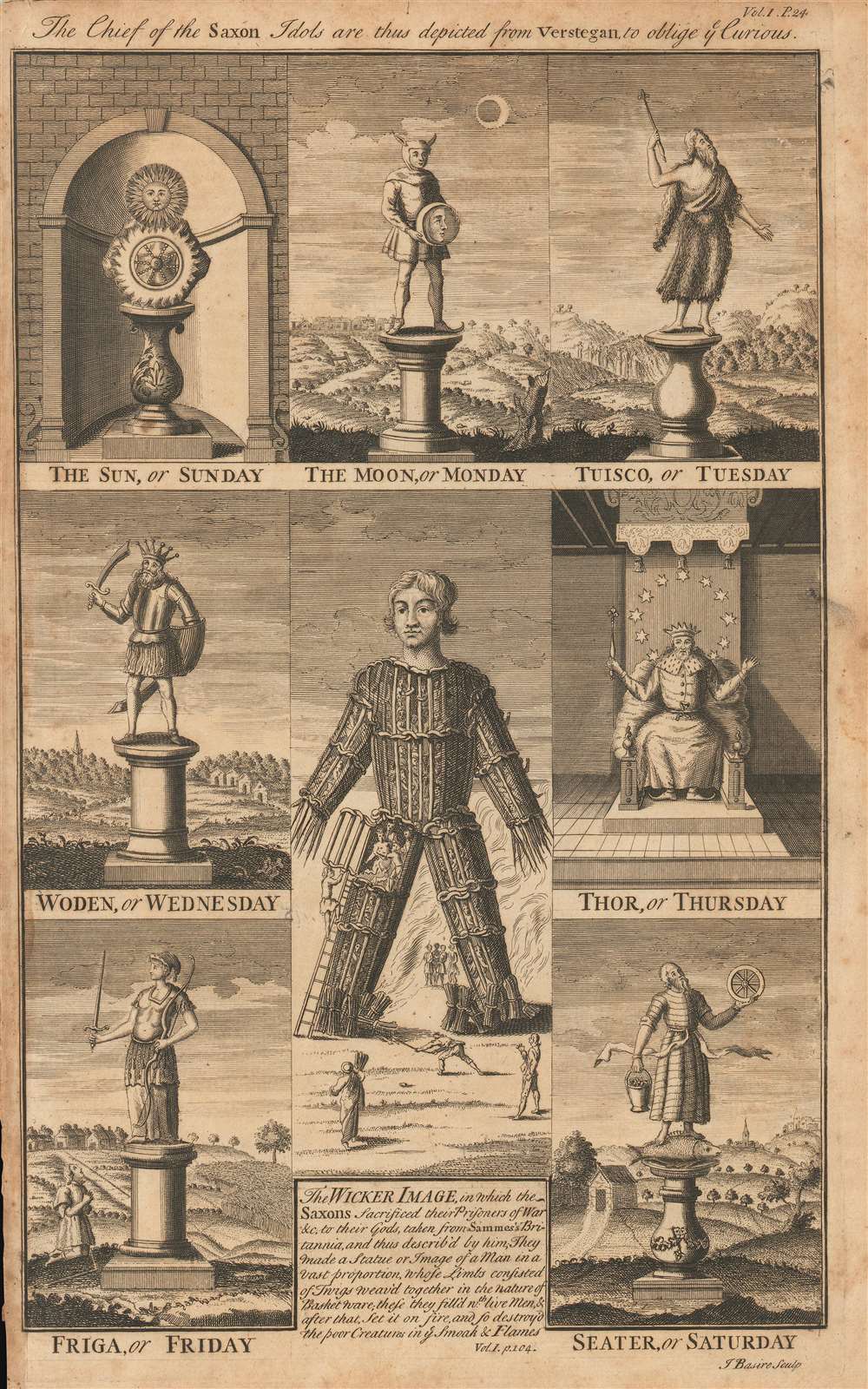This item has been sold, but you can get on the Waitlist to be notified if another example becomes available, or purchase a digital scan.
1700 Basire Engraving of Anglo-Saxon Idols and the Wicker Man
WickerImage-basire-1700$250.00

Title
The Chief of the Saxon Idols are thus depicted from Verstegan to oblige ye Curious.
1700 (undated) 15 x 9.25 in (38.1 x 23.495 cm)
1700 (undated) 15 x 9.25 in (38.1 x 23.495 cm)
Description
This is a c. 1700 James Basire engraving of the seven chief Anglo-Saxon gods, for whom the days of the week are named, per Richard Verstegan (aka Verstegen, aka Rowlands), and the Wicker Man, a Saxon ritual, from Britannnia by Aylett Sammes. The seven gods Verstegan proposes are first in the minds of the Saxons are The Sun, The Moon, Tuico, Woden, Thor, Friga, and Seater, for whom one of the seven days of the week is named. These seven illustrations are inspired by very similar ones present in Richard Verstegan's A Restitution of Decayed Intelligence in Antiquities. Concerning the Most Noble and Renovvmed English Nation, which was published in Antwerp in 1605.
We have been unable to trace the source of this engraving, thus we are unable to comment with any certainty on its rarity. We are aware of another very similar engraving that we believe is connected to the present example, although how is unclear.
The Wicker Man
A Wicker Man was means of sacrifice used by the ancient Druids (the priests of Celtic paganism) in the form of a large wicker statue. Constructed as hollow effigies, per Julius Caesar and his epic Commentary on the Gallic War, the Druids would force their prisoners of war and others to be sacrificed to the gods into the structure to be burned alive. Little archaeological evidence has surfaced to corroborate this claim, and little credence is given to ancient Greco-Roman sources as the Greeks and Romans 'were eager to transmit any bizarre and negative information' about the Celts. The Wicker Man has been used in some contemporary pagan festivals.We have been unable to trace the source of this engraving, thus we are unable to comment with any certainty on its rarity. We are aware of another very similar engraving that we believe is connected to the present example, although how is unclear.
Condition
Very good. Even overall toning. Soiling. Close left margin. Blank on verso.

